Merida bucks the wide gravel tyre trend with its new Mission race bike
Merida has actually reduced tyre clearance on the new Mission compared to its Silex gravel bike

Merida has launched a new gravel race bike named the Mission today. The brand claims this is a speed-oriented gravel bike with road and cyclocross influence.
The Merida gravel range isn't vast; the Mission slots into the line between the road-influenced Scultura Endurance GR and the Silex, which is a more adventure-focused machine.
A racy machine to complement an existing adventure-focused model makes sense. Merida is calling the Mission ‘the ultimate gravel race bike for every surface’.
Merida has actually reduced tyre clearance for this new bike, with the Mission sporting a max 40mm tyre clearance. Less than most of the best gravel bikes right now.
I can hear your gasps from here. Why so narrow? The brand claims it wanted this to be a racy, road-influenced machine and did not want to drop the seat or chainstays and retain the ability to run a double chainset; all things that increasing space for bigger tyres can compromise.
I attended the launch of the Mission out in Girona a few months ago, with ex-world gravel champion Matej Mohoric in attendance. The Slovenian went on to finish third at the gravel world championships just a few weeks later on the Mission. You can read my first ride review of the bike to see how the Mission rides in the real world.
This is actually something of a rebirth for the Mission name. Merida released a Mission cyclocross bike around five or six years ago. Today marks a new chapter for the name.
The latest race content, interviews, features, reviews and expert buying guides, direct to your inbox!
The five model strong Mission range will retail for £2,250 / €2,700 for a base 4000 spec model, rising up to £7,000 €8,400 for the range-topping 10K machine.
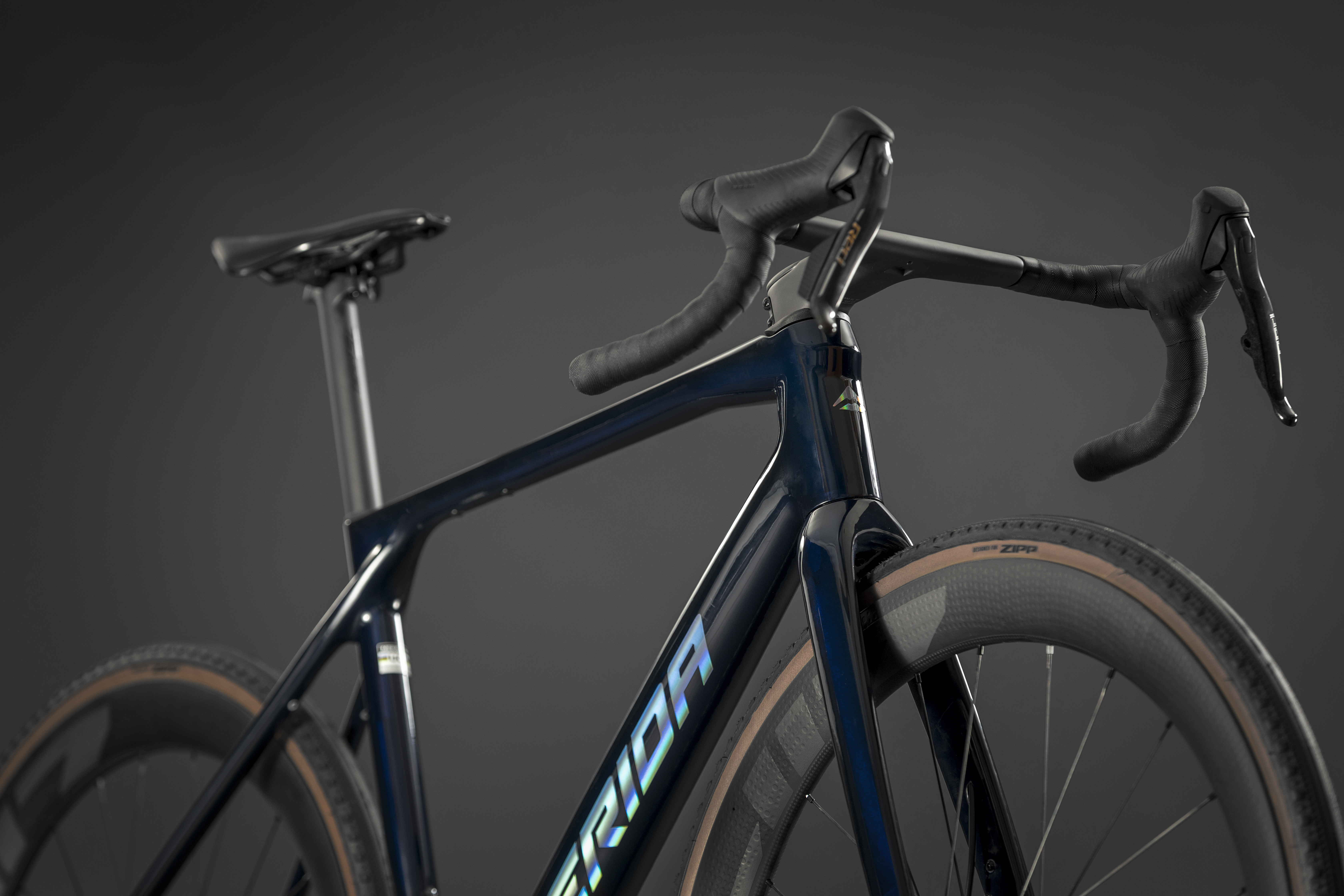
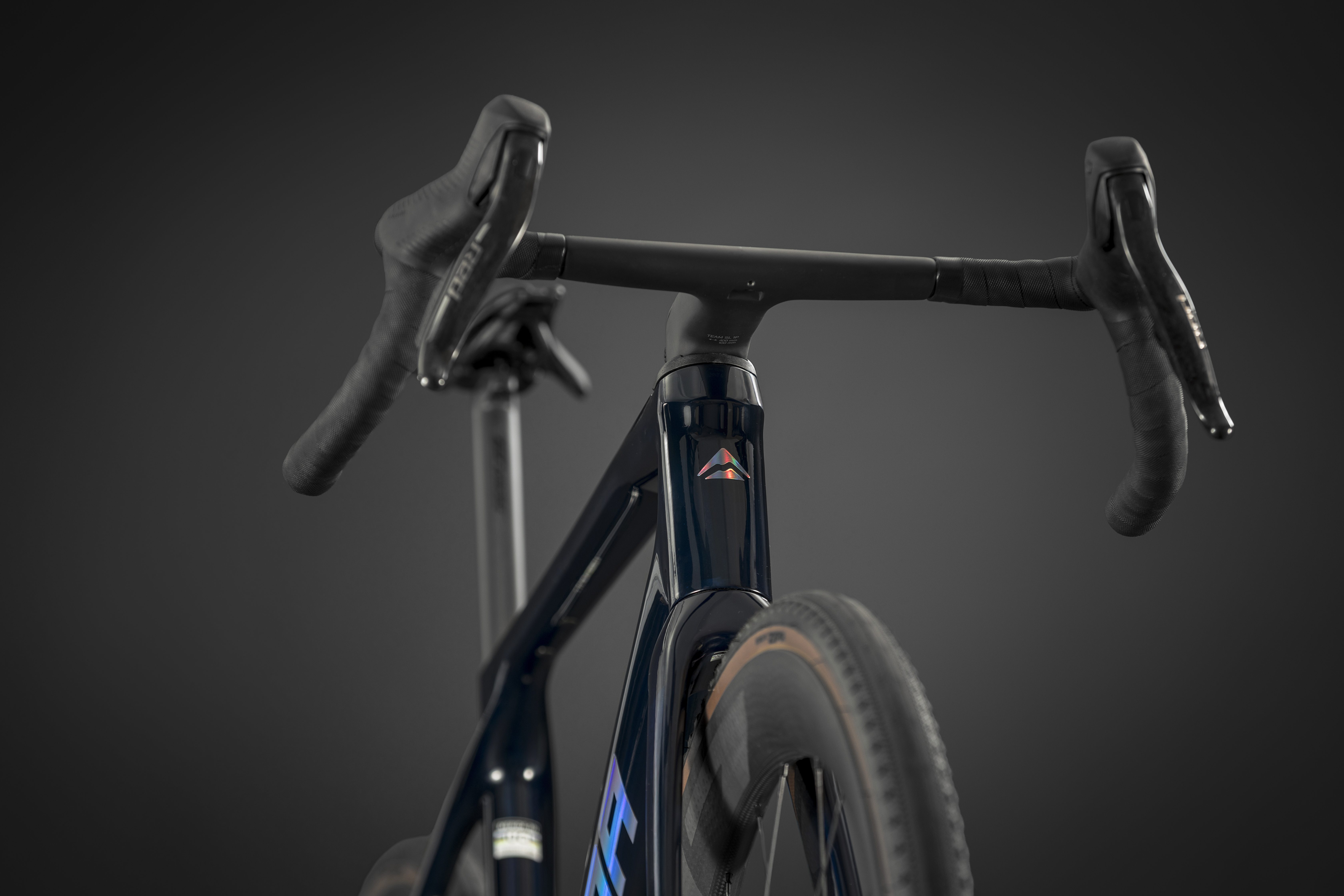
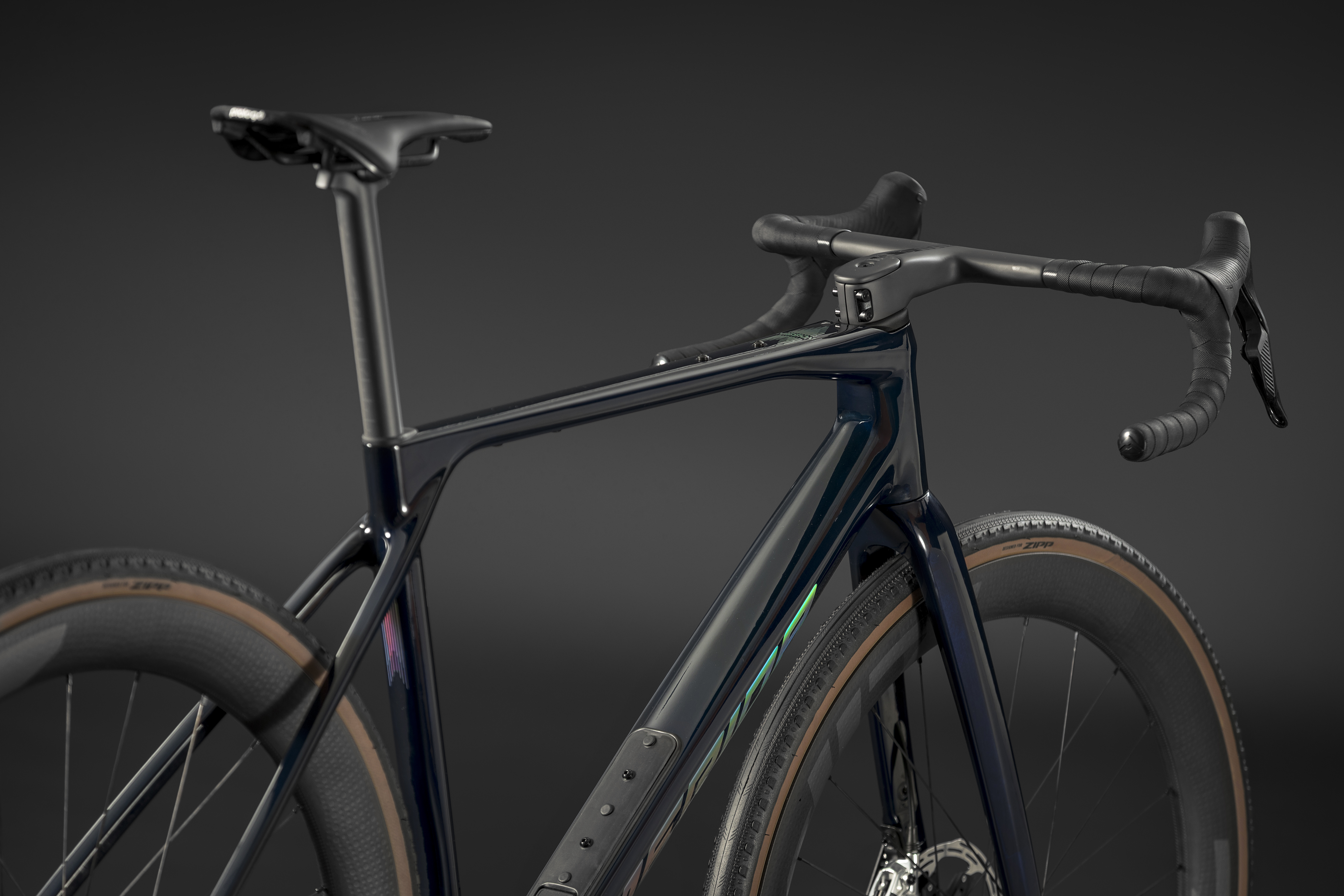
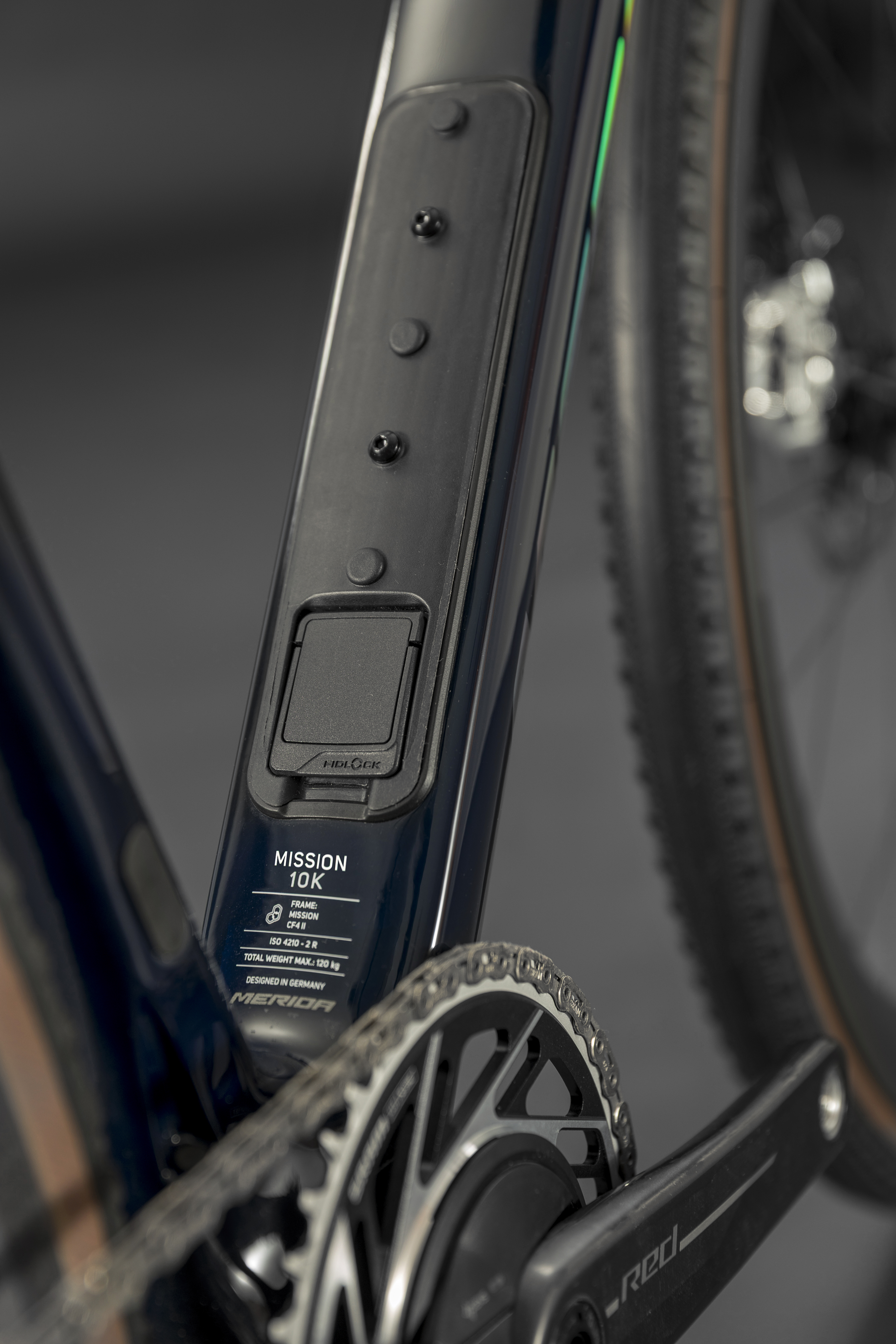
At the heart of the Mission is a Merida carbon fibre UDH-friendly frame in one grade of CF4 carbon fibre, which every model shares.
There are non-dropped seatstays, which produce a good-looking frame that looks angular and fast. There aren't any wattage saving or aero design claims to give you, but Merida does mention more aerodynamic tube profiles being used on the Mission that take influence from the Scultura.
There’s also a carbon fibre integrated handlebar and stem named the Team SL GR1P cockpit that is based on the bar used on bikes like the Reacto and Scultura. This gravel version, which is specced on 7000, 9000 and 10K bikes, is essentially the same, but features a wider flare and is said to aid frame aerodynamics.
Geometry-wise, compared to the Silex, the Mission is shorter in stack and reach, with a two-and-a-half-degree steeper 72-degree head angle, and with 11mm shorter chainstays. Merida also cites the lower bottom bracket drop of 72mm as being a contributing factor to the racier handling.
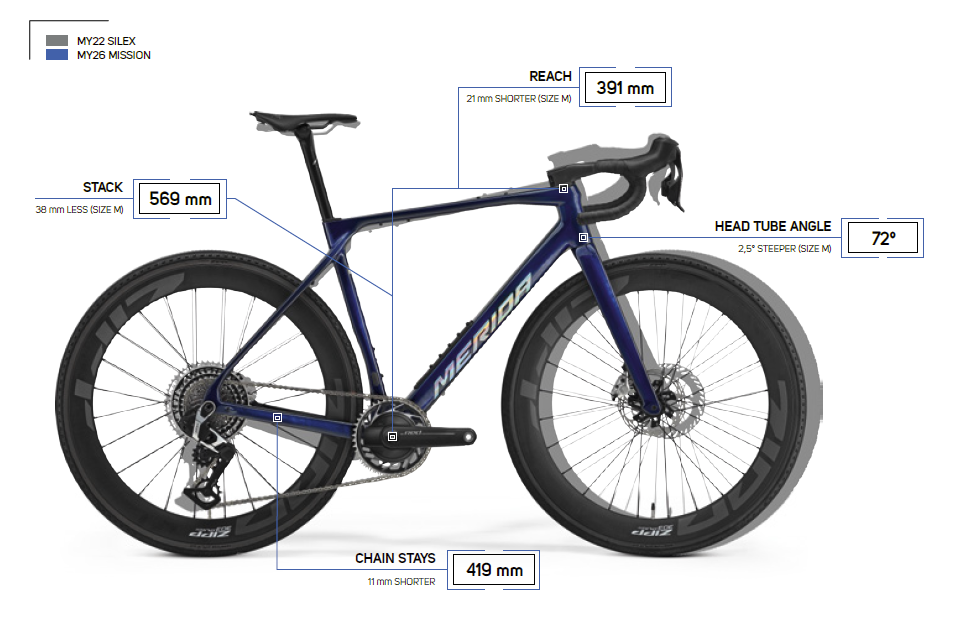
The Mission has an official 40mm tyre width, though I understand 45mm tyres may be able to be fitted, but it would be tight. Merida cited different tyres measuring up differently on different rims and adhering to ERTRO guidelines as a reason for choosing 40mm, but it's on the tighter side regardless.
Merida cites Bahrain Victorious rider input as an influence, and there was a feeling at the bike's launch that the Euro road pros want a gravel race bike that, in essence, still feels like a fast road machine, with the ability to run a double chainset, etc.
If you're purely playing tyre clearance top trumps, a 40mm clearance these days is going to be considered on the smaller side by most and even plain outdated by many.
Merida claims the 40mm clearance is a deliberate decision, citing sharper handling and lower weight. According to the brand, 40mm is a sweetspot between tyre clearance for speed off-road and maintaining a sleek road bike silhouette, as well as balancing aerodynamics and tyre sizing.
Merida’s disc cooler, a design feature that has been present on many Merida bikes, features on the Mission. The cooler is a vented aluminium ‘fin’ on the outside of each disc calliper, which is said to draw heat away from the calliper and also adds a degree of protection.
There's a downtube storage space and an interior bag that Merida calls G.U.T., which stands for 'Gear, Useful, Things'
The frame features three water bottle mount points inside the front triangle and a top tub bag mount. There are also hidden fender mounts. This may seem at odds for a race bike; however, all cyclists like to stay dry, and the ability to fit fenders for wet training could be useful. Though mudguards do reduce tyre clearance to 35mm. For gravel riding, a clip-on fender with more clearance may be a better way to go.
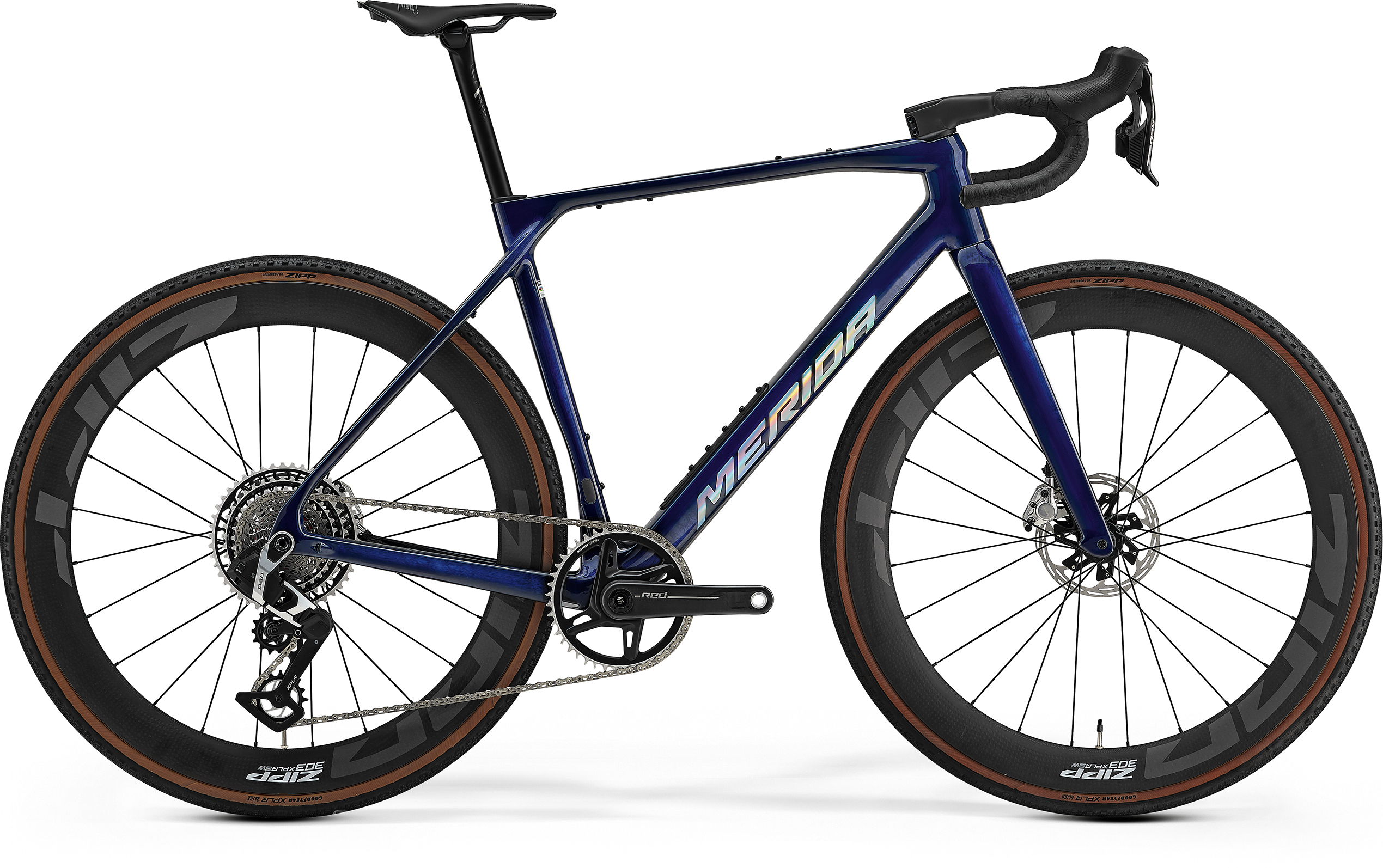

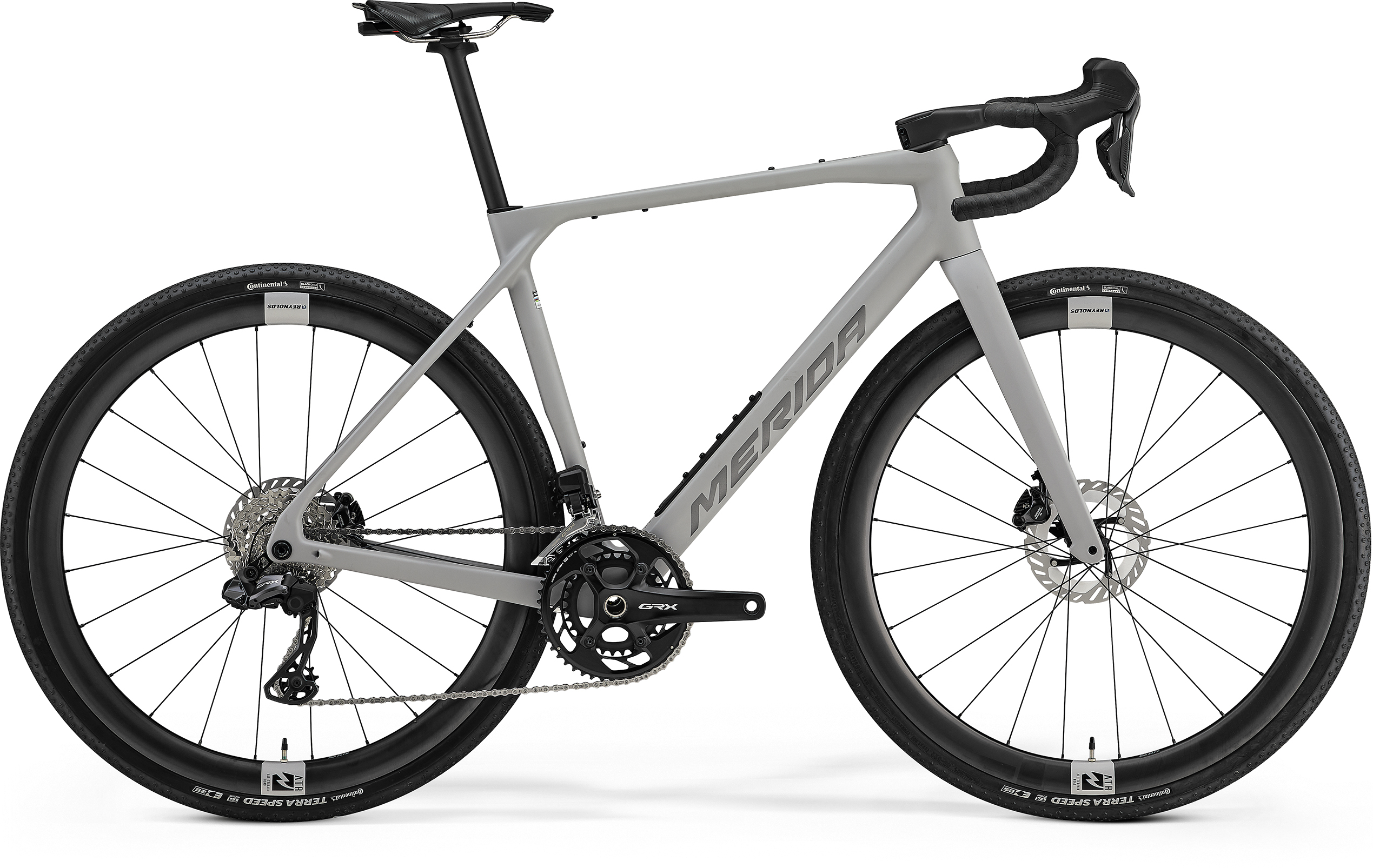
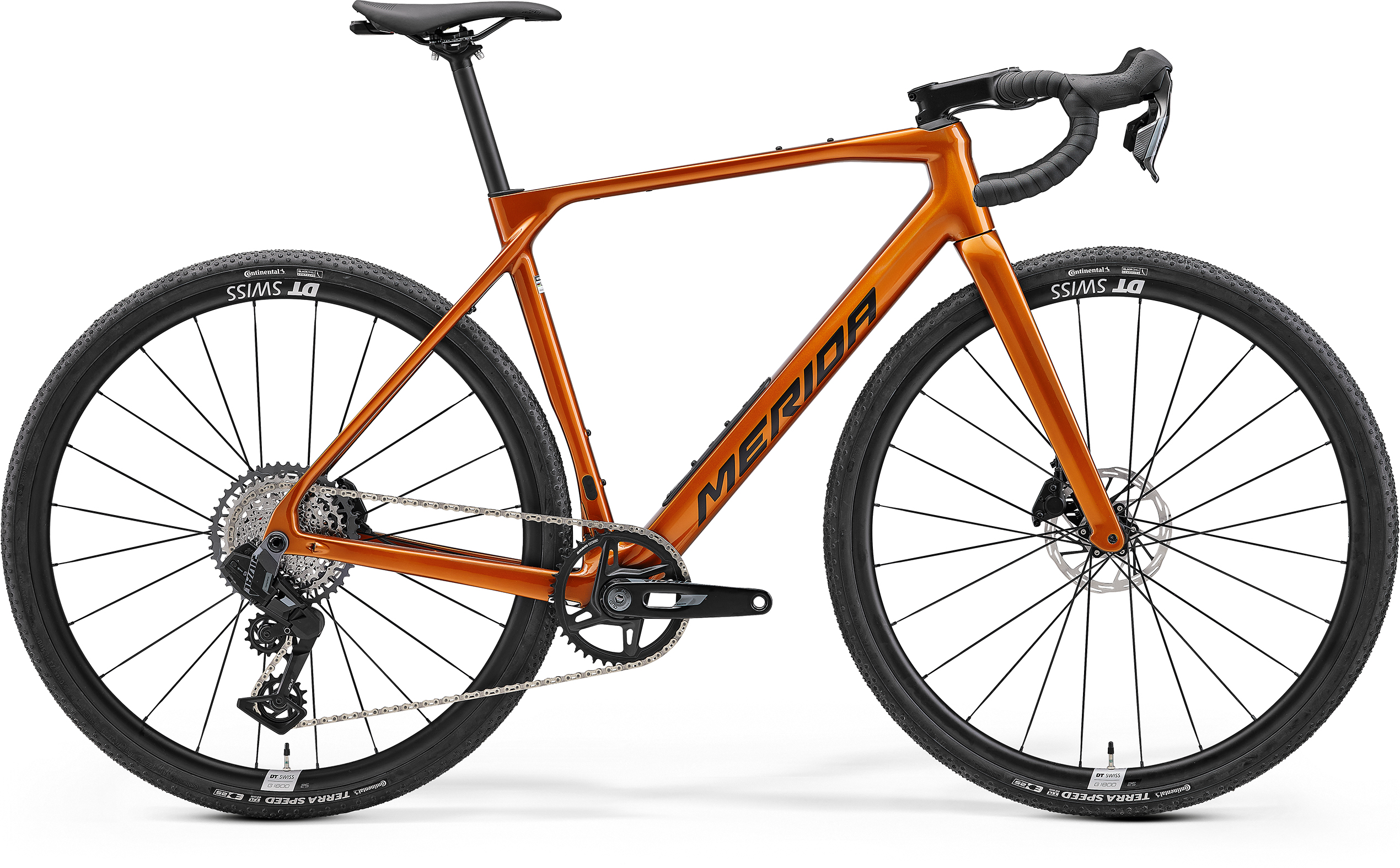
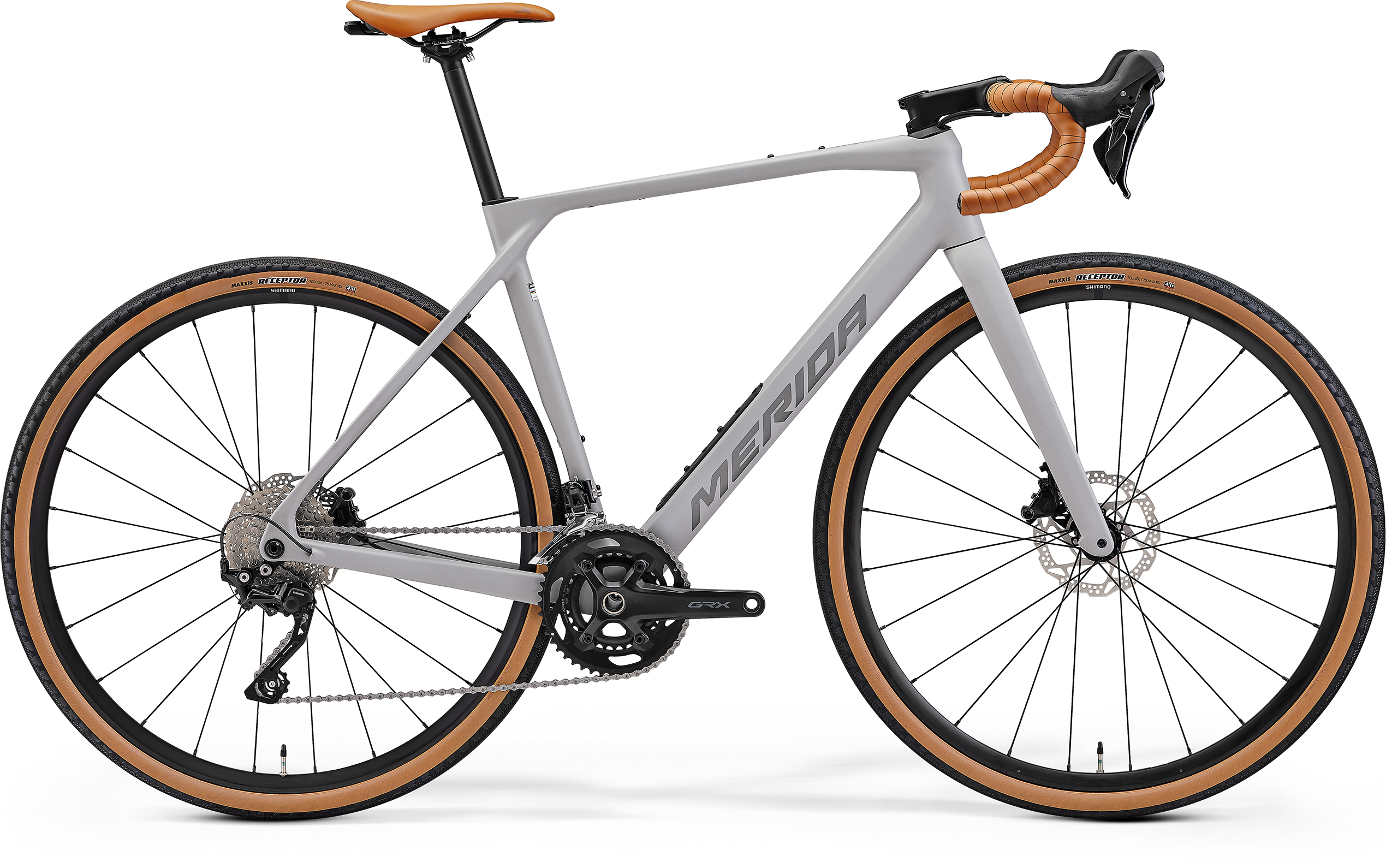
The Mission range is comprised of five models, the top-tier Mission 10K bike, and descending down to 9000, 7000, 6000 and 4000 models.
Three of the bikes, the 10K, 9k and 6k models use SRAM Red, Force and Rival AXS XPLR groupsets. The 7k and 4K bikes are equipped with Shimano GRX 2X groupsets. Builds also feature Zipp XLPR and Reynolds carbon wheels.
Pricing:
Mission 10k: £7,000 / €8,400
Mission 9000: £5,000 / €6,000
Mission 7000: £4,600 / €5,520
Mission 6000: £3,400 / €4,080
Mission 4000: £2,250 / €2,700

Tom joined the Cyclingnews team in late 2022 as a tech writer. Despite having a degree in English Literature he has spent his entire working life in the cycling industry in one form or another. He has over 10 years of experience as a qualified mechanic, with the last five years before joining Cyclingnews being spent running an independent workshop. This means he is just as happy tinkering away in the garage as he is out on the road bike, and he isn’t afraid to pull a bike apart or get hands-on with it when testing to really see what it’s made of.
He has ridden and raced bikes from an early age up to a national level on the road and track, and has ridden and competed in most disciplines. He has a keen eye for pro-team tech and enjoys spotting new or interesting components in the wild. During his time at Cyclingnews, Tom has already interviewed some of the sport's biggest names including Mathieu van der Poel, Tadej Pogačar and Alberto Contador. He's also covered various launches from brands such as Pinarello, Ridley, Specialized and more, tackled the Roubaix Challenge sportive aboard his own rim-brake Cannondale SuperSix Evo, tested over 20 aero helmets in the wind tunnel, and has created helpful in-depth buying advice relating to countless categories from torque wrenches to winter clothing.
You must confirm your public display name before commenting
Please logout and then login again, you will then be prompted to enter your display name.